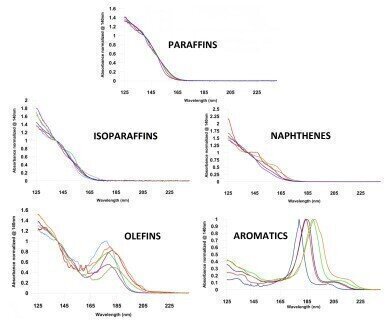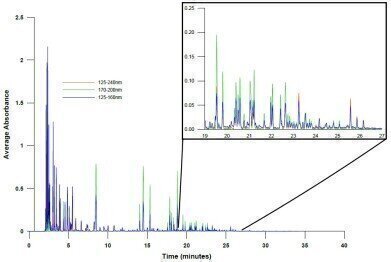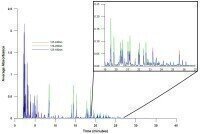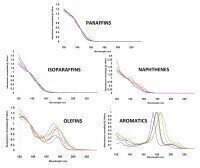Analytical instrumentation
Novel Detector Dramatically Simplifies PIONA Analysis
Feb 26 2016
VUV Analytics, Inc. (Austin, TX) has recently announced an analysis engine called VUV Analyze which will allow the company to introduce application specific solutions based upon the VGA-100, the world’s first vacuum ultraviolet (VUV) absorption GC detector. GC-VUV data is inherently three dimensional, allowing some of the separation to occur at the detector. This means that standard analyses that have previously required complex chromatographic separation can be simplified and shortened. VUV absorbance spectra are typically highly structured and distinct for different molecules, yet exhibit the intuitive property of having similar features when measuring similar compound classes.
The VUV Analyze engine implements equations and fit procedures that result in deconvolution of absorbance spectra that contain contributions from multiple species, is capable of binning and storing response contributions from each deconvolution analysis, and reporting a combined total response at the end of the analysis. The data processing includes a database library of VUV reference spectra, compound class information, density, approximate retention index values, relative response factors for each hydrocarbon class, and relative response factors for individually reported compounds. The compound class or specific compound concentrations can be reported as mass or volume percent.
Measurement of bulk composition of hydrocarbon groups and individual compounds in gasoline is important for quality control as well as ensuring compliance with various governmental regulations. As such, multiple ASTM methods exist for measuring various aspects of gasoline samples. Most of the methods are limited in scope to a subset of hydrocarbon groups or specific compounds of interest, meaning that multiple methods are required for typical production control. More comprehensive methods such as ASTM D6730 and ASTM D6839 tend to involve complicated instrumentation and/or setup procedures. These methods have no inherent ability for self-monitoring of measurement results (e.g., a fit criteria or similar), and instead rely on precise definition and control of retention times, resulting in more error-prone production measurements.
VUV Analytics’ first released application, called VUV PIONA+™, uses GC-VUV to improve detailed and bulk classification analysis of petroleum-based fuels. The result is the potential for GC-VUV to significantly reduce the complexity or run times compared to existing ASTM methods for fuel analysis, as well as the potential to combine information currently obtained using multiple methods. The VUV PIONA+™ method results in a per-measurement information set that would typically require implementation of multiple ASTM methods (i.e. D5769, D5580, D1319, D6550, D3606, D4815, D5599, D5845) while being inherently more robust and production-worthy than the more comprehensive ASTM gasoline methods.
The VUV PIONA+™ method uses relatively simple instrumentation: a gas chromatograph, a standard 30m nonpolar column, and the VGA-100 detector. Bulk concentrations of the hydrocarbon classes of paraffins, isoparaffins, olefins, naphthenes, and aromatics are determined. Specific analytes can also be singled out for further characterisation, for example individual oxygenates or aromatics belonging to the BTEX complex. The setup procedure is straight-forward, with no pre-column tuning or valve timing adjustments. Additionally, analyses are faster since the method can handle co-elution among various species and hydrocarbon classes.
Digital Edition
PIN 26.1 Feb/Mar 2025
March 2025
Analytical Instrumentation - Elemental Analysis for Quality and Process Control at Refineries, for Lubricants and Wear Metals in Engine Oils - Synthetic Lubricants: New Developments - Scaling...
View all digital editions
Events
Mar 17 2025 Houston, TX, USA
Mar 18 2025 Beijing, China
Mar 19 2025 Manila, Philippines
Mar 20 2025 Brussels, Belgium
Mar 20 2025 Guangzhou, China









.jpg)



.jpg)








